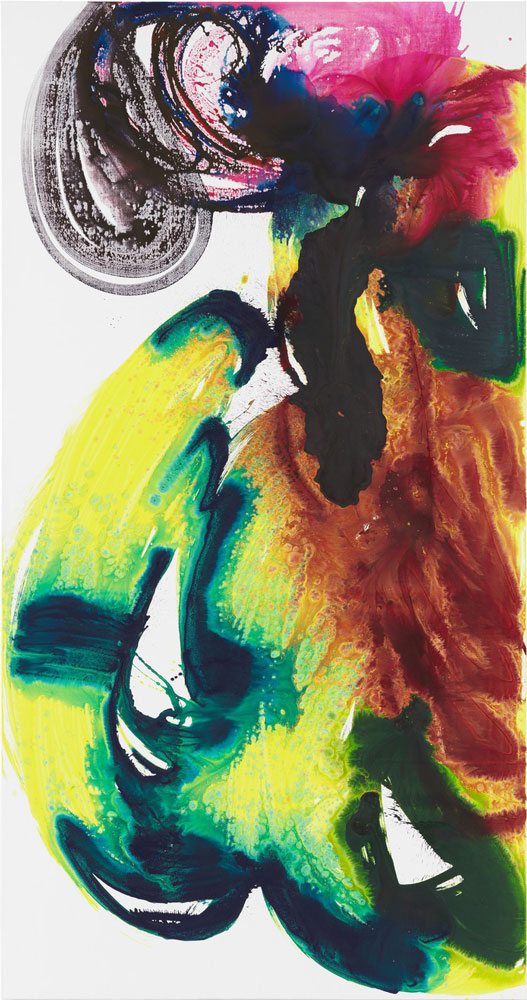ART CITIES:Rome-Katharina Grosse
 Widely known for her in situ paintings, in which explosive color is sprayed directly onto architecture, interiors, and landscapes, Katharina Grosse embraces the events and incidents that arise as she works, opening up surfaces and spaces to the countless perceptual possibilities of the medium. Approaching painting as an experience in immersive subjectivity, she uses a spray gun, distancing the artistic act from the hand, and stylizing gesture as a propulsive mark.
Widely known for her in situ paintings, in which explosive color is sprayed directly onto architecture, interiors, and landscapes, Katharina Grosse embraces the events and incidents that arise as she works, opening up surfaces and spaces to the countless perceptual possibilities of the medium. Approaching painting as an experience in immersive subjectivity, she uses a spray gun, distancing the artistic act from the hand, and stylizing gesture as a propulsive mark.
By Efi Michalarou
Photo: Gagosian Archive
Katharina Grosse in her solo exhibition “Separatrix”* presents new paintings and works on paper. The exhibition coincides with Grosse’s major installation “It Wasn’t Us”, currently on view at Hamburger Bahnhof–Museum für Gegenwart, Berlin. In July 2020, Grosse started working in a new purpose-built studio in a remote coastal area in northern New Zealand, where she spends several months each year. There, secluded in nature, she began a new body of work, imbuing the medium of watercolor with the directness and immediacy of her spray paintings. Envisaging the blank sheet of paper as a topographical record, Grosse experimented with a wet-on-wet technique using vibrant pigments, allowing them to swim and intermingle across the surface, leaving behind iridescent pools and blooms. After returning to her Berlin studio, she transferred what she terms the “consequences” of these watercolors to a series of large-scale paintings, setting the canvas horizontally, adding dilute acrylics using a brush, and then tilting the support to produce multidirectional drips and currents of color as a secondary gesture. Taking a cue from Gottfried Wilhelm Leibniz’s theory of the “separatrix,” Grosse revels in the alternating moments of order and chaos that arise from visual thresholds, moments of collision and diffusion in medium, material, and hue. Her approach is scientific as well as painterly: she analyzes the material properties of paint, water, and canvas in advance, using their alchemical interactions to effect specific visual occurrences. Fields of color osmose into one another and collide like cultures growing in a petri dish; a sweeping brushstroke transforms into a matrix of neurons. In Grosse’s hands, the microscopic details of her process are magnified, resulting in towering formal compositions that attest to moments of flux and sudden clarity in her working process. For the exhibition “It Wasn’t Us”, Katharina Grosse has transformed the Historic Hall of Hamburger Bahnhof–Museum für Gegenwart, Berlin, as well as the outdoor space behind the building, into an expansive painting which radically destabilises the existing order of the museum architecture. In the interior space, the painting’s support consists of the floor of the hall and a group of towering forms crafted from polystyrene. Grosse trans-posed these sculptural elements into their final size via a multi-stage pro-duction process involving incremental changes of scale. The objects were created using digital cutting technologies, with the shape of each element refined by hand before being processed into data via a 3D scanning sys-tem in order to mill the successive larger object. In a final step, the full-scale constituent parts of the sculptures were moved into the hall of the museum and assembled by a team of workers. Over several days the artist used a hot wire to create indentations and fine furrows in the fragile objects before covering them and the floor of the building with dynamic swathes of color which were applied layer by layer with a spray gun.
* In mathematics, a separatrix is the boundary separating two modes of behaviour in a differential equation.
Info: Gagosian Gallery, Via Francesco Crispi 16, Rome, Duration: 31/10-12/12/2020, Days & Hours: Hours: Mon-Fri 10:00-18:00 (by appointment only), https://gagosian.com





